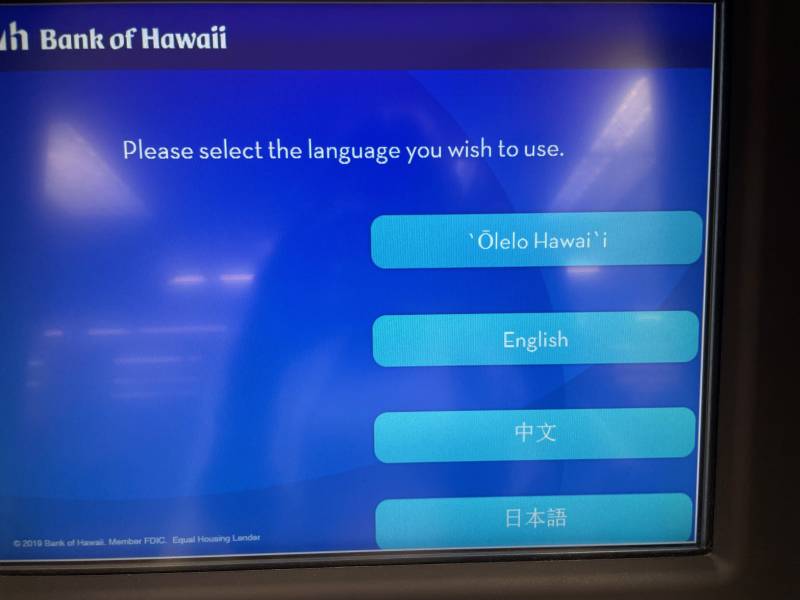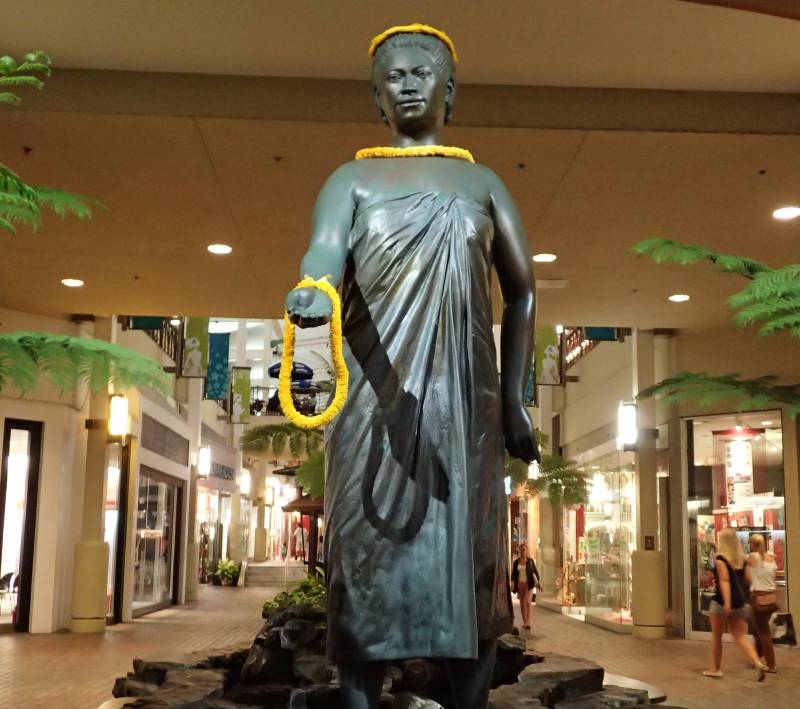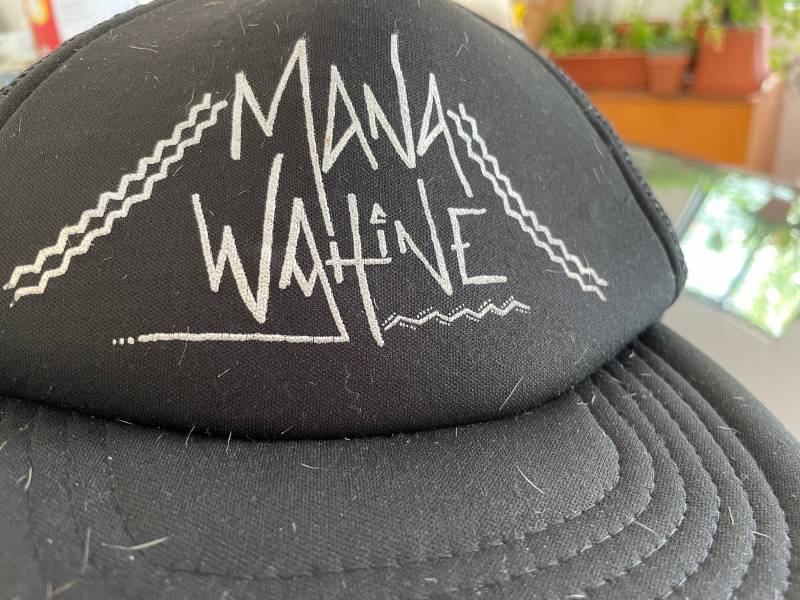My first blog post about why the welcome mat is harder to find in 2021 for new residents of Hawaiʻi generated more commentary than any blog post I have written in the past dozen years. My purpose in these follow up posts is to get practical about steps a newcomer could take towards being welcomed by their new community.
As I mentioned in the earlier post, responsible real estate professionals here have always taken the time to orient their relocating clients. My colleague Julie Keller, who grew up here, wrote a series on “How Foʻ Ack” back in 2018; the link is to part 5 of the series which has links to all her posts. More recently, Linda Hussey wrote about things sheʻs learned in 15 years of living here.
Both of them touch on something so simple it should be obvious. Please pronounce Hawaiian words correctly, starting with the places you have chosen to live.

One of my favorite doormats from Honolulu-based CraftTheNightAwayCo
Where Do You Live? My Own Introduction to the Idea that Place Names Matter in Hawaiʻi
One of the complexities of my own move to Hawaiʻi Island was that the Swiss Guy and I were moving with our dog, my horse, my parents, and their cat. We knew my parents were going to be at the Regency at Hualalai in Kailua Kona; we decided to rent a place for ourselves until we figured out where we wanted to live. There are not a lot of places that board horses, so I was fortunate that a chance encounter led to a phone call with Barbara Nobriga…not an exaggeration to call her legendary; you might have read about her in this article in Hana Hou, the Hawaiian Airlines in-flight magazine.

Noted Wāhine Paniolo Barbara Nobriga (left) and Fern White (right) in Kamehameha Day parade along Aliʻi Drive in 2015
Picture me seated in Barbaraʻs truck, empty horse trailer behind us, heading to the dock at Kawaihae to retrieve my mare. She asks where I am living and I answer, “right here in Kona.” My response was met with a wilting glare. Oops! Iʻm thinking this is going to be a long ride. “Kona” is the name of this entire district, referring to the leeward side of the island, she instructed. I learned what the name “Kailua” meant and why USPS created a hyphenated name, and that the name “Lanihau,” the shopping area where my box at the UPS store was located, was also a place name.
Over the next few hours I learned a ton of history, the importance of genealogy, and was given a short lesson in pronunciation. Most importantly, I had met the first person who was kind enough to hanai me — to be a strict auntie in my lessons on how to behave in a respectful way so I could begin to be viewed as other than just a years-long still-ignorant visitor.
But Those Hawaiian Names are So Long and Difficult to Pronounce
Recently it was my turn to pass on the first lessons. I was enjoying the sunset with clients who are finally occupying the home they spent years building on the lot I sold them in Kohala Ranch. Having arrived during the pandemic, they still knew almost no one here and felt like they were lacking orientation to living in Hawaiʻi. I was their initial source of that connection.
“I cannot pronounce the name of the highway between here and Kona. Is it ok to continue to say Queen K Highway?”
The simple answer, IMHO, is no, it is not ok. This is where I do want you to be like the Swiss Guy. Switzerland has four legal languages, and every Swiss person I know would make it a point of pride to correctly pronounce names of people, places — and of course the food and drink they order — when in a part of Switzerland where a language other than their own is spoken.

And before you remind me that Hawaiʻi is part of the United States, let me remind you that the state has two legal languages — English and ʻŌlelo Hawaiʻi. You can argue your case in court, or write a check at your bank, in the Hawaiian language.
So yes, I do believe that you can and should make the effort. To be completely honest, the sarcastic voice in my head is thinking, “Pretty sure a hundred years ago Queen Kaʻahumanu was fluently speaking and writing English within six months of the arrival of the missionaries. Why do I hear over and over again that it is unreasonable to expect newcomers to learn and correctly pronounce the names of places and people of Hawaiʻi?” E kala mai, sorry — Iʻm headed straight to my shrink or at least to my meditation cushion.
I hear you sigh, “OK, I get it but itʻs easy for you to say because you are good at languages.” Itʻs true. I love languages and am “good at them.” But that only means I have effective strategies for learning languages. And Iʻm happy to share them with you.
Learning Strategy 1: If You See a Hawaiian Word Written, You Can Pronounce it Correctly
Letʻs start with place names. Newer street names on Hawaiʻi Island must be in the Hawaiian language.
And so with my clients, I was patient and encouraging, explaining that luckily the Hawaiian language was written phonetically, so if you see it written you can pronounce it correctly. And then we practiced the Hawaiian vowels and the ʻokina or glottal stop. The five syllables of Kaʻahumanu seem less daunting if you think each short syllable is easy, and you just string them together.
If you donʻt have access to someone who knows how to pronounce the vowels, there are plenty of online resources like this Maui GuideBook entry; this Hawaii Life post; or if you are more ambitious, this series Ka Leo ʻŌiwi is really fun to watch.

You know what this is right? The state fish of Hawaiʻi is the humuhumunukunukuapua’a — just take it one syllable at a time…
Learning Strategy 2: What is the Meaning of the Word?
You may have noticed that a lot of names, both people and places, start with the syllables “ka” or “ke.” Those names become easier to remember when you know that those are the singular articles “the.” Why are there two? I donʻt know, but German (and Swiss German) have three, and you just have to memorize them for each noun. Fortunately in ʻolelo Hawaiʻi, there are general rules for which to use depending on the first letter of the word that follows.
When we look at the name Kaʻahumanu then, is the first word more likely to be kaʻa like the ones causing too much traffic on the highway, or could it be simply ka or “the.” Then the second word would be ʻahu – and note that with the okina that makes it a different word than ahu without the okina. And manu is a word you will hear often…in songs, or as a name. The cloak-bird — referring to the feather cape that royalty wore, perhaps?
Here is a link to an online Hawaiian dictionary, for you to research your own street address.

Build your vocabulary by learning what the various meanings might be for the streets of your neighborhood.
Learning Strategy 3: What is the Story of the Place or Person?
Each of these place names – of your street, your subdivision, and the historical names for your place — carries meaning, carries a story. That is why when you are not learning the names and their meanings, what you convey to people from here is a lack of respect for the place and its people. And you are missing an opportunity to explore the culture that drew you to Hawaiʻi specifically, rather than to any other sunny, laid-back island “paradise.”

This statue of Queen Kaʻahumanu is in the center of the shopping mall bearing her name in Kahului, Maui
So once you can confidently say the five syllables of Kaʻahumanu, and recognize a few words in that name, perhaps you might become curious about who Queen Kaʻahumanu was. I encourage you to dig deep as different sources will interpret facts differently.
I am embarrassed how many times when showing my historic conservation listing at Kapanaia I referred to her only as King Kamehameha Iʻs favorite wife, as if that was the whole story. I had not done my homework.
Once I spent a bit of time researching Kaʻahumanu, I was more curious about whether he was her favorite husband — they certainly had a complex relationship. I wondered whether all of her marriages were merely political alliances. But marriages aside, Kaʻahumanu was one politically astute and powerful woman, a true leader.

Iʻm kind of big on woman power so now when I drive down the Queen Kaʻahumanu Highway, I contemplate how truly humbled I am as I learn the history of the queens and kings of Hawaiʻi. These were remarkable leaders, and their shaping of the Kingdom to take its place within the international community of nations offers lessons for today. That helps me understand why the people of Hawaiʻi today are justifiably proud and looking for ways to carry that legacy into modern times.
Learn the names. Honor the names. Talk to people about their history. Let respect for people and places guide your own contributions to your new home.




 If you’re planning to look at property while you’re on vacation in Hawaii, there’s one mistake you don’t want …
If you’re planning to look at property while you’re on vacation in Hawaii, there’s one mistake you don’t want …
Michael Marks
July 15, 2021
Beautifully articulated Beth. Extremely pertinent and valuable information for new residents to the islands.
Beth Thoma Robinson, R(B)
July 15, 2021
> Thank you Michael!
Linda Hussey
July 15, 2021
Great follow up Beth. It only took one correction by my Hawaiian Studies Kumu to make me understand that the most respectful thing to do is to pronounce words correctly and no not abbreviate. Place names are so much more than just a name.
Beth Thoma Robinson, R(B)
July 15, 2021
> Linda I was always impressed that you took your commitment to learn about language and culture to the level you did! What a role model for your clients.
Susan Higgins
July 15, 2021
Wonderful article Beth! I actually had a client ask me about your first article. I’d say you definitely got people’s attention. This blog is so spot on. I also had the benefit of a great first teacher. Of course there’s always more to learn. Thank you for sharing!
Beth Thoma Robinson, R(B)
July 15, 2021
> Thanks, Susan. I hope it was helpful to you and your buyer.
Nathan Forster
July 16, 2021
That was a great article Beth. As a new resident of Hawaii I am grateful for this kind of information to help me learn and be respectful.
Beth Robinson
July 16, 2021
> Thanks, Nathan. Glad you found it helpful